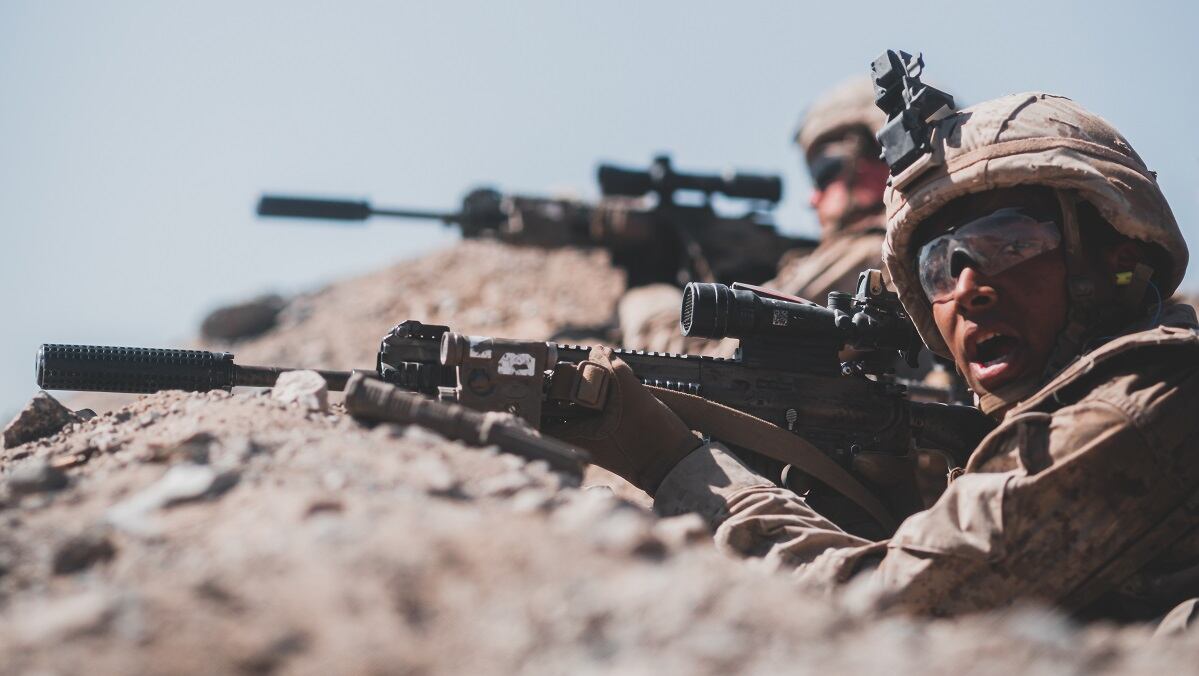Since the modern Corps emerged out of the ashes of World War I, Marine infantry has been the focus of the force.
Every Marine Expeditionary Force, air wing and logistics group has had one goal: to provide whatever it can for Marines on the lead fireteam in any fight.
But the Marine Corps is going through a time of radical change as it shapes itself to be able to fight China, adding on capabilities needed for the unique littoral fight while cutting some deemed unnecessary.
But there is still one major question the Corps has not, at least publicly, fully answered. What will Marine infantry do?
“The unanswered question in my mind is what that means for the people who have zero and three in front of their (military occupational specialty),” Jonathan Wong, a Marine infantry enlisted and officer veteran who now works as a policy researcher for RAND Corp., told Marine Corps Times.
RELATED
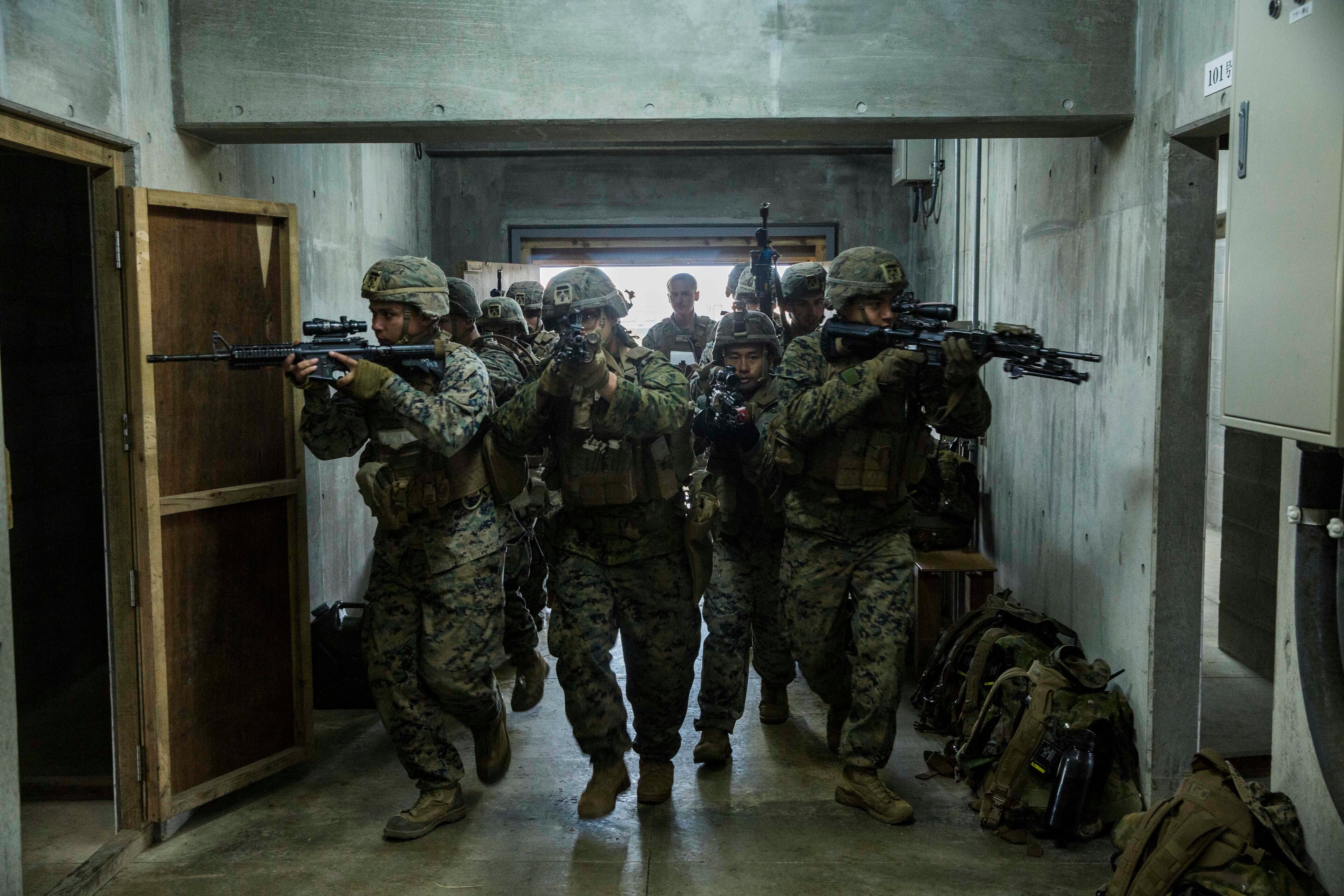
While Marine Corps Commandant Gen. David Berger hopes his force design will be completed by 2030, he wants Marines already to be fighting in a new way by 2023 — putting a time crunch on how long the Corps has to figure out what to do with the infantry.
One Marine infantry officer said he does not think the infantry has any particular role in the expeditionary advanced base concept that could not be done just as well by another MOS.
“If every Marine is a rifleman and you have a battery of anti-ship missiles or something and those Marines are by extension rifleman, do you need to put infantry with them?” asked Capt. Walker Mills, an active duty infantry officer.
There always will be a role for the infantry, Mills said, but if the next fight is the one the commandant is preparing for, “there is going to be less of a role for the infantry,” Mills said.
Beyond the loss of missions, the life of Marine infantry may also look different, from different unit organization to the priority level on the budget as the Corps looks for new projects to reinvest in.
“I suspect that some of the trade-offs to buy the capability that we need will come out of the infantry,” Wong said.
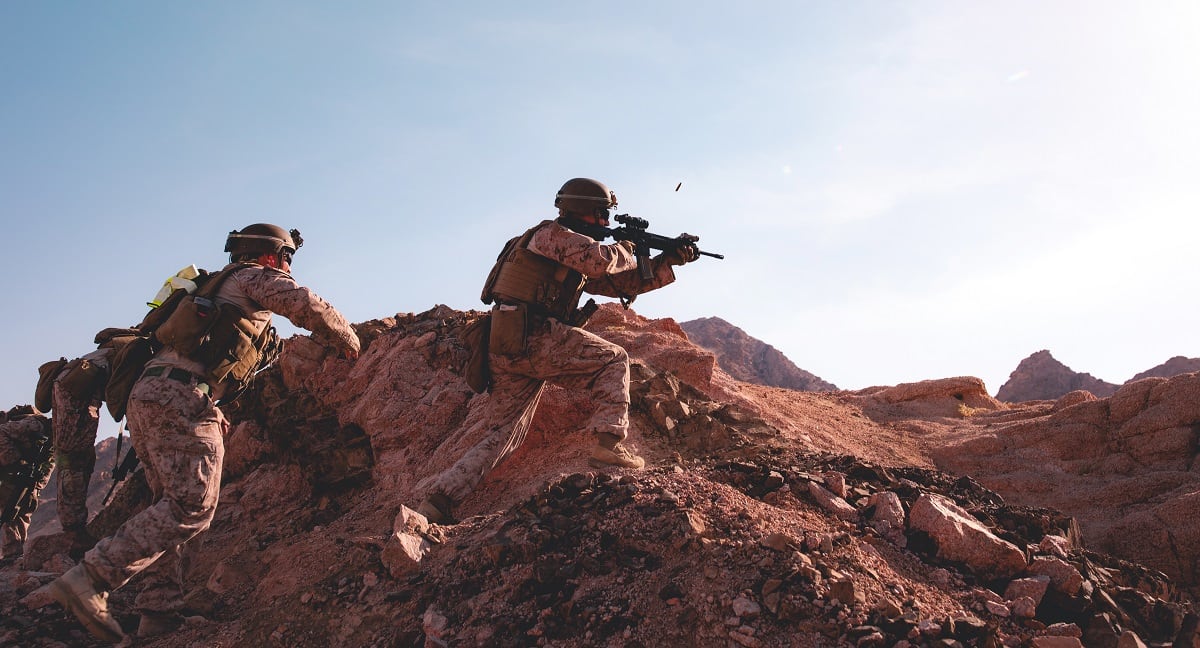
The Marine Corps will be getting rid of three infantry battalions, though it does plan to fully staff every battalion that remains, something that Corps has fallen short of in the past.
Despite the shrinking size, the Marine Corps does plan to invest more time into training Marine infantry to be more well-rounded, if less specialized.
Berger’s vision sees a smaller lighter, faster Corps armed with heavy weapons fighting a near-peer opponent capable of hitting the Marines on the ground harder than anyone the Corps has fought since World War II.
To counter that hit, the Corps will fight in small, dispersed units capable of sinking ships, tracking submarines, launching electronic weapons and overall holding its own long enough for the rest of the joint force to take on the fight.
The distributed operations fight so far has only left two obvious roles for the infantry: One is to protect small expeditionary advanced bases, while the artillery and cyberwarfare Marines conduct the real fight. And, two, to conduct small-scale raids, which will allow the Corps to take airfields or launch missiles deep inside enemy territory.
But the two relatively small roles, combined with the ascendency of other parts of the Marine Corps, like artillery, put into question a Marine Corps historically centered on the infantry.
A superior ground force
During World War I, the Marine Corps proved it was a ground force to be reckoned with. Fighting in the trenches as part of the U.S. expeditionary force Marines earned the Devil Dog nickname.
But the role of the Marine Corps still took decades of internal debate to decide, said Ed Nevgloski, director of the Marine Corps history division.
“The Marine Corps is bitterly divided throughout the early 1900s into the 1930s,” Nevgloski said.
In the 1920s and 1930s the Corps developed the advanced base concept under famed Marine Corps Commandant Gen. John A. Lejeune.
“He finally puts his foot down,” Nevgloski said.
The concept would see Marines create advanced bases scattered through the Pacific to provide refueling and rearming ports for the Navy.
Along with a massive expansion of the force in World War II, specialization was required and thus the birth of Marine occupational specialties.
“In World War II we expand so much that we have rear echelon responsibilities … that’s where you start to see the separation and that the infantry forms the backbone of what the Marine Corps mission really is.”
As World War II started, the concept was used as part of the U.S. island hopping campaign against the Japanese, which saw the Corps take strategically important islands in the Pacific and allowed the allies to push bombers closer to the Japanese mainland.
As the Marine air-ground task force, or MAGTF, was developed, the importance of the infantry was emphasized. The task organization of the Corps as a whole, from the air wing to logistics, was focused on providing the infantry whatever it needed in the fight.
“What it also does is it inculcates and instills into every MOS within the Marine Corps that they have a role in the Marine Corps’ primary mission and they have a role in defeating the enemy,” Nevgloski said.
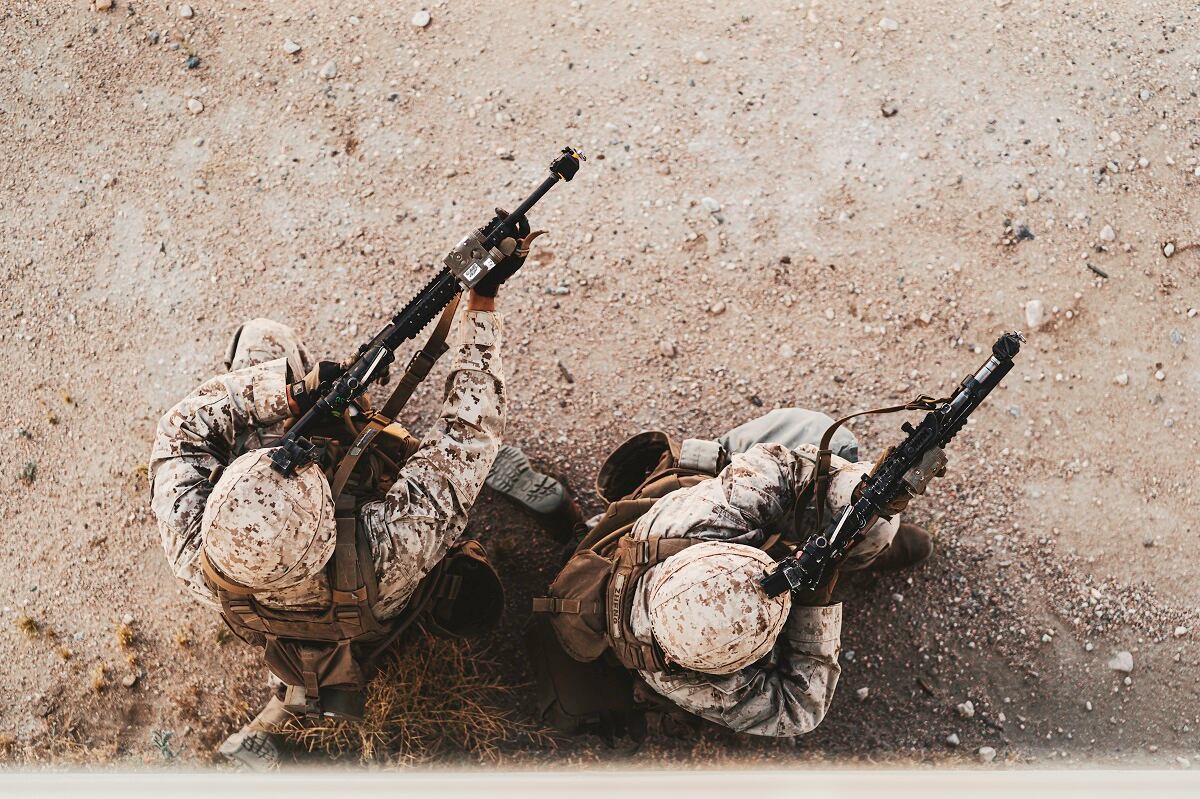
After nearly two decades of fighting in the Middle East the Corps is once again in a transition period, searching for a mission it can uniquely fill.
For Berger, that mission sees the Marine Corps returning to its nautical roots.
The new expeditionary advanced base operations will see the Corps take and hold small islands in the littorals of any future battlefield with the goal of enabling the Navy’s maritime campaign, while being small enough to avoid any single devastating blow by the enemy.
The expeditionary advanced bases could be used as resupply points for the Navy, as submarine hunting bases or fire bases for Marine Corps ship-sinking long-range artillery.
To achieve that small, mobile force that packs a punch, the Marine Corps has ditched its tanks and plans on switching most traditional tube artillery units into missile units.
It also plans on investing in unmanned aerial vehicles like the MQ-9 Reaper, which ideally will provide better long-range reconnaissance assets, while also giving the Corps a powerful downrange weapon system.
The primacy of the Marine Corps infantry has so far stood the test of time, but the shift in focus to long range fires and a subordinate role to Navy maneuver may change that.
“Right now, the infantry is the centerpiece and artillery, aviation other capabilities support the infantry. Over time the artillery and infantry will be the centerpiece and the infantry will be the supporting arm,” retired Marine Col. Mark Cancian said.
If a generation of Marines move through the Corps with that dynamic, “the Marine Corps will become a long-range strike service … and the ethos of the infantry will no longer permeate the Marine Corps, the Marine Corps would look much more, frankly, like the Army,” he added.
Though the culture may change, the fighting spirit of the Corps will never be in doubt, according to Sergeant Major of the Marine Corps Troy Black.
“The future fight will still require Marines to ‘first and foremost,’ have a “warfighting ethos that we literally locate, close with and destroy our enemy,” he told Marine Corps Times in February.
Wong said what he sees happening is the long-range fires community taking on some of the ethos of the infantry.
When Berger describes “how the Marine Corps is going to be this kind of raiding force that’s the stand in force, on your own, dispersed, there’s something about the infantry culture that’s there,” Wong said.
Whatever the impact on the culture may be, it still leaves the Corps looking for what missions the infantry can do.
“There’s a big re-evaluation going on and there are different factions with different ideas and who knows which direction it’s going to go in,” said B.A. Friedman, a military analyst who focuses on amphibious warfare. “They don’t know.”
With an eye on great power competition the Marine Corps does know it can no longer use the infantry as a blunt weapon facing off one-on-one versus the opponent.
One concept sees the infantry acting in support of a maneuvering artillery battalion. In March, 12th Marines, an artillery unit, took charge of an exercise it conducted with Marine infantry supporting it.
“Historically we had what’s called direct support — artillery supported the infantry as they secured an objective,” Col. Michael Roach, commander of 12th Marines, told Marine Corps Times. “In this case we were the supported force, so in both exercises an infantry unit was attached to the artillery unit, so that’s a change. We had artillery officers as mission commanders for infantry forces.”
The support may be exciting, like in high mobility artillery rocket system rapid infiltration missions, where Marines drop in for a quick raid on an enemy held island to help a C-130 land and deploy a single volley deep behind enemy lines. The missions also may be boring, like providing perimeter security on semi-permanent HIMARS fire base.
The infantry Marines may also be tasked to complete missions that fall outside their normal specialties.
The Corps is interested in tracking submarines and focusing infantry Marines on providing security to expeditionary advanced bases.
Or, as the Marine Corps continues to add firepower, Marines may be manning larger more powerful drones.
Outside of small scale raids or base security for an expeditionary advanced base, Wong said the infantry could have one more often-overlooked mission.
The U.S. can use Marines to develop relationships with the nations surrounding China and Russia, using the infantry on cross-training exercises like Cobra Gold or the rotational force in Darwin, Australia, to limit the great powers regional aggression, he said.
Mills also pointed out that if China were to invade a nation like Thailand or even Japan, the role of the infantry would be key in defending territory against the Chinese military.
Changing shape
The infantry’s shape is also changing.
The goal of providing a small squad level drone played in part in the Corps’ decision to increase the size of the rifle squad to 15 Marines.
The infantry squad may also see an increase in responsibility.
With increased dispersion throughout small littoral islands, future Marine companies may take on the responsibility once held by battalions, while platoons or even squads may take on what was previously reserved for companies.
Friedman said there will likely be no external change to Marine infantry, but rather an internal one in how it is trained an organized to best fit the mission.
No longer can the Marine Corps be made up of three Marine expeditionary forces that look almost identical and deploy on Marine expeditionary units that are almost identical, Friedman said.
A MEU heading to the Mediterranean Sea, where the expected threat is embassy evacuation, should be specially tailored to that mission, while one heading to the Pacific should be specially prepared to fight within the EABO concept and dispersed operations.
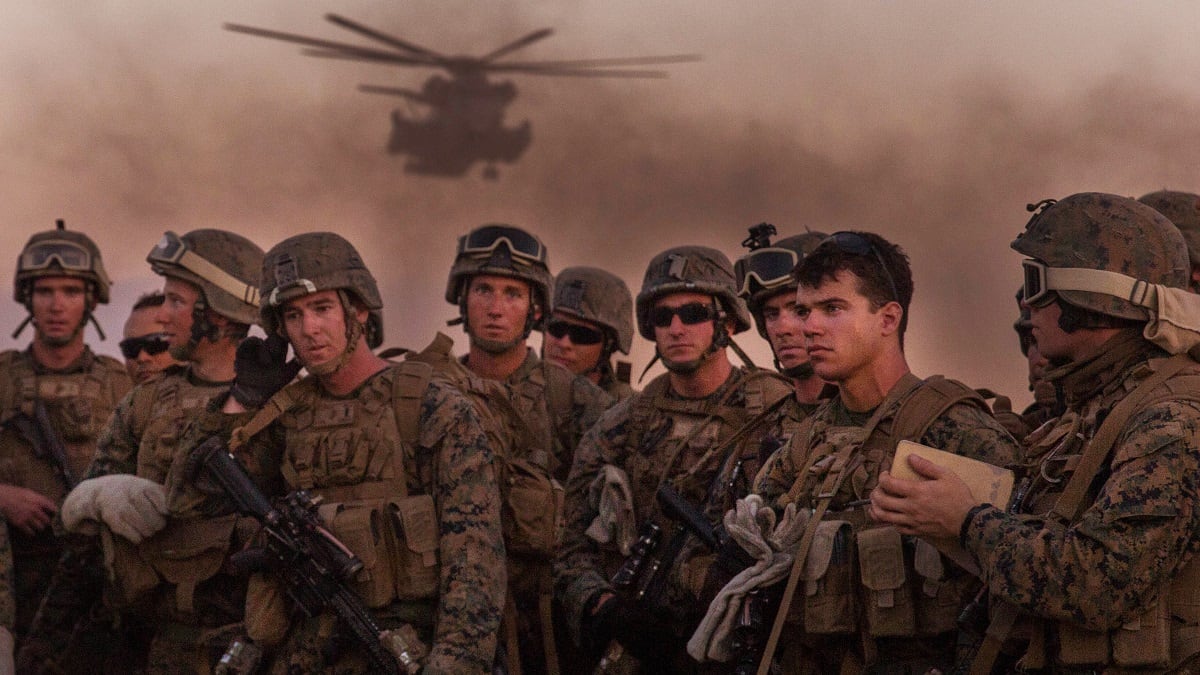
“We’ve got to start tailoring our infantry forces and what our right mix is, who knows,” he said.
To prepare infantry Marines for this future, the Corps is looking into extending its enlisted School of Infantry and possibly combining all or some of the different military occupational specialties within the infantry field into one.
The Corps already has completed its first experimental 14-week Infantry Marine Course, which is five weeks longer than the previous SOI course.
The school teaches Marines 21 new skills with a focus on increased use and experience with multiple infantry weapons systems along with specific training in expeditionary advanced base scenarios.
The Marine Corps plans to make the new Infantry Marine Course the standard grunt training by 2023, to coincide with a plan to consolidate all infantry military occupational specialties.
RELATED
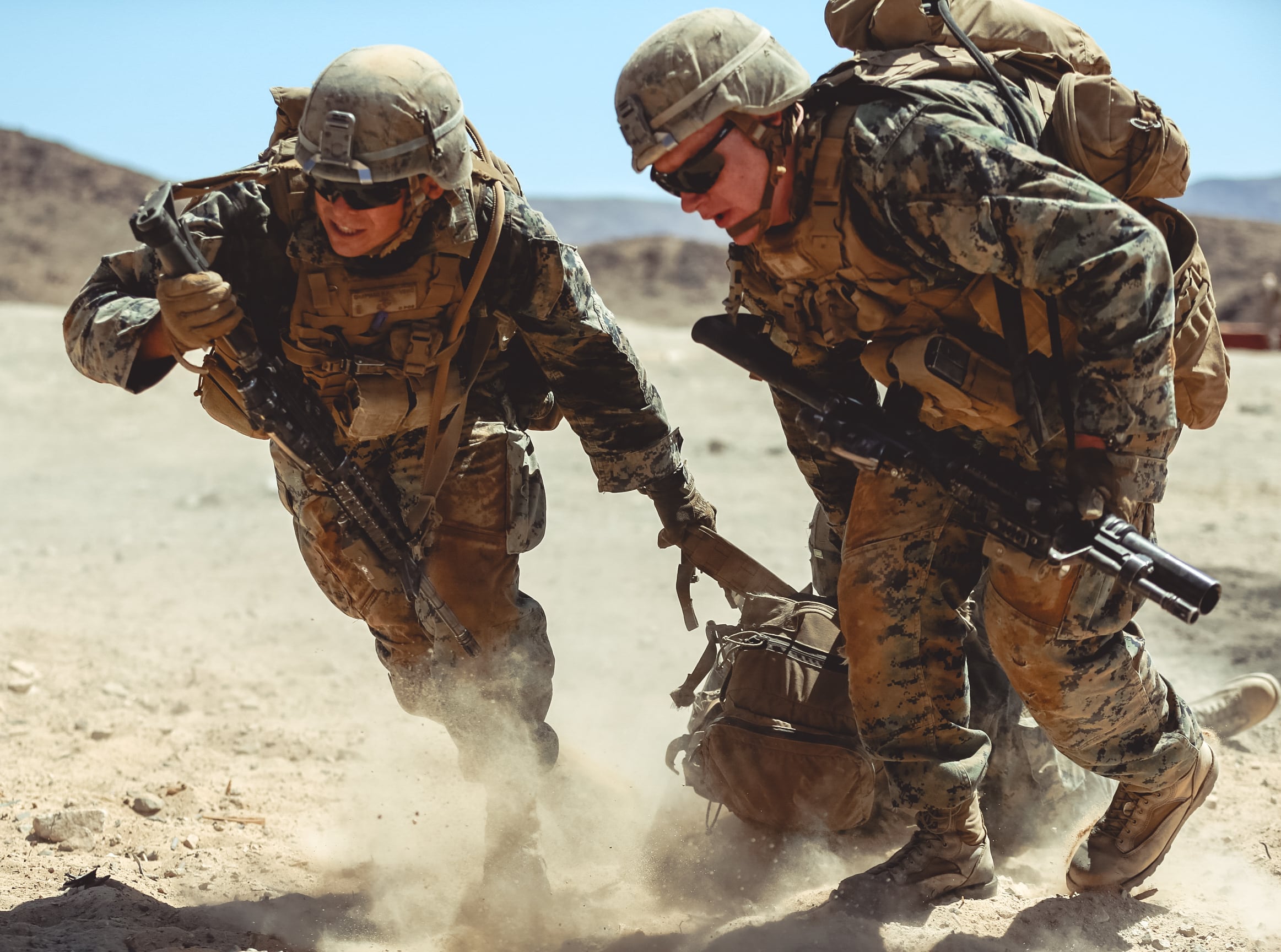
The plan will see almost all infantry Marines heading to the fleet with a standard 0311 rifleman MOS designator. The units they join will likely not have a weapons company as part of the battalion. Instead, the 0311s will be assigned to a role within the infantry unit based on the needs of the mission they are preparing for and their personal capabilities.
It is possible infantry Marines will have a “baseball card” follow them around, showing what they are particularly proficient in, be it firing machine guns, land navigation or basic marksmanship.
“We are going to see if we can potentially place him or her in the best location for them,” said Chief Warrant Officer A.J. Pasciuti.
The Corps already has started experimenting with this “arms room” concept with three battalions in the fleet.
The only slight exception to the consolidated infantry MOS will see Marines slated for the current 0341 mortarman job go to extra training after the 14-week IMC.
Though the extended training has been lauded, the idea of combining different infantry jobs into one has caused some to worry the Marine Corps will lose some expertise.
“Anyone can figure out how to load and fire a 240 (machine gun)” Wong said. “To really do it well to employ it in its most sophisticated form… you got to know what you’re really doing.”
